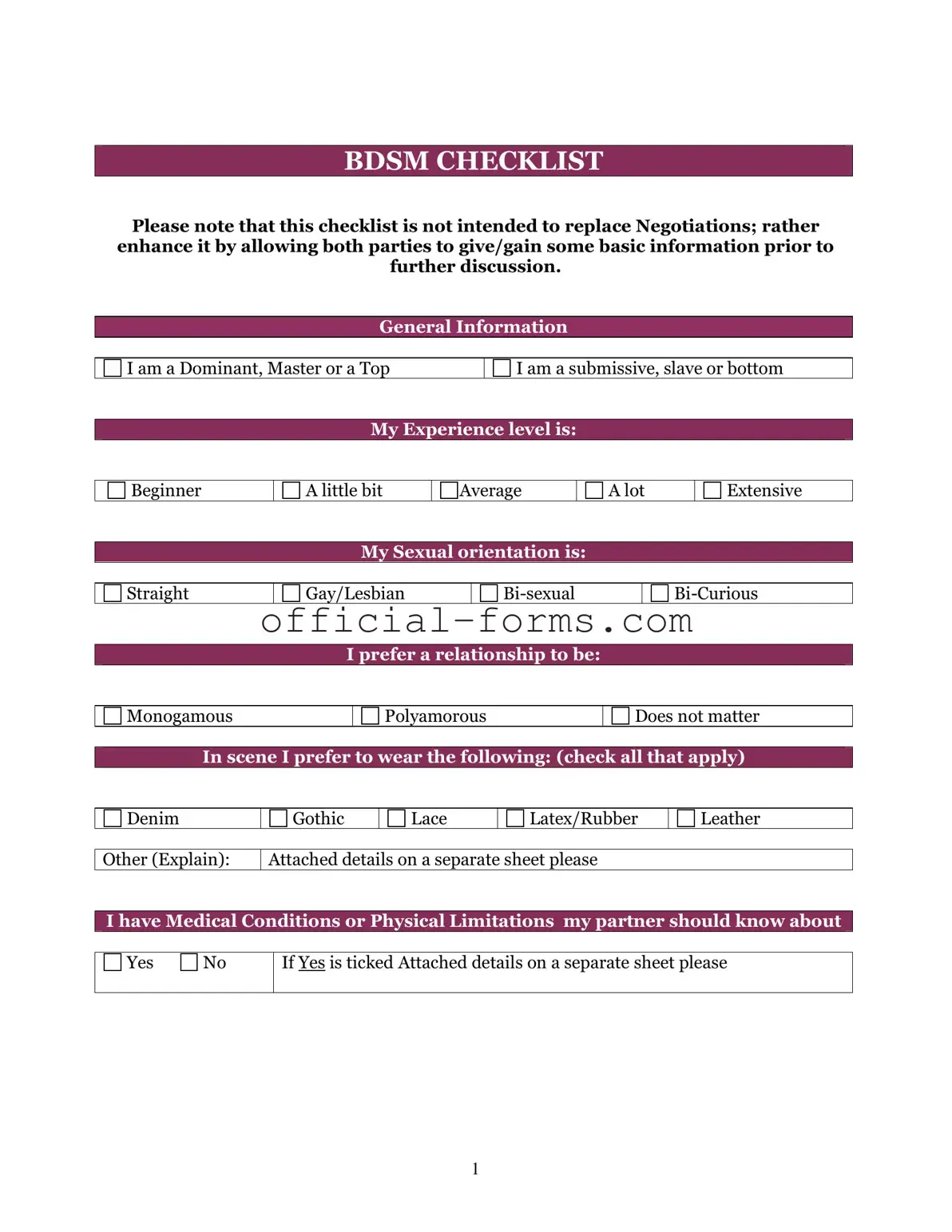In the realm of BDSM, communication and consent are paramount, and the BDSM Checklist form serves as a vital tool to facilitate these essential elements. This comprehensive form allows individuals to express their preferences, limits, and interests within the context of BDSM activities. By outlining various practices, from bondage to role-playing, the checklist enables participants to identify what excites them and what they may wish to avoid. It encourages open dialogue between partners, fostering an environment of trust and mutual understanding. Additionally, the form often includes sections for discussing safety measures, aftercare preferences, and any potential health concerns, ensuring that all parties are informed and comfortable. As a living document, it can evolve with the relationship, allowing for ongoing exploration and growth. Understanding the nuances of the BDSM Checklist form can empower individuals to engage in their desires confidently and consensually.
